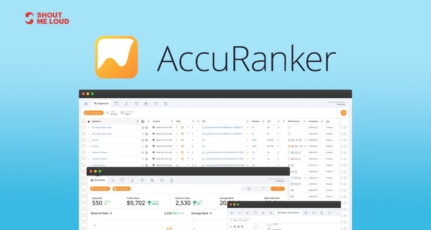A meta description is one of the most overlooked aspects of technical SEO.
Although a meta description is not a ranking factor, that doesn’t mean you should skimp on creating one for your web pages.
A well-crafted meta description can influence the click-through rate of your website. It’s one of the first things users see before clicking on your page. Think of the meta description as an advertisement for your webpage on the SERP.
Neglecting to add one, you’ll be missing out on a significant opportunity to entice visitors to click through to your website.
In this guide, we’ll cover everything about creating a perfect SEO meta description for your pages.
Let’s go…
What is a Meta Description in SEO?
A meta description is a short blurb displayed in search engine result pages beneath the title tag as a preview snippet. The purpose of it is to give users a brief overview of what they can expect to find on the page if they click on the search result.
Here’s a good example.

To better understand your web page, search engine web crawlers like the Googlebot utilize various elements such as schema markup, sitemaps, and meta tags.
A meta description is one of those elements. The purpose of it is to give the search engines a summary of what your page is all about.
In your page’s HTML, it’s denoted as:
<meta name=”description” content=” Example of a meta description”>

When users search on Google, the search engine will look for any available meta descriptions for that page.
If you have already written one, Google will display the text on the search result page to give visitors a sneak peek of your page content.
However, search engines have gotten better at understanding and crawling a page. If the search engine finds your meta description irrelevant, it’ll pull a snippet from your content that best matches a user query.
This happens more often. Studies show that Google rewrites meta descriptions 62.78% of the time.
I know what you’re thinking:
“But Harsh, if Google automatically generates a meta description for my page, why bother creating one?”
The short answer, it’s good for SEO. Besides, even Google themselves recommends creating one.
So, let’s dive deeper and explore why crafting a compelling meta description is important.
Importance of Meta Descriptions
Meta descriptions are important because they give a searcher a glimpse of what to expect from a page when they click the link. They also help search engines understand what your page is all about.
Contrary to most SEO beliefs, a meta description is not a ranking signal.
Whether you add them or not doesn’t affect how Google and other search engines understand and rank your website.
As mentioned, search engines like Google can automatically generate a relevant meta description based on a user search query.
However, having a meta description for every of your crawlable and indexable pages is crucial as it can influence click-through rates.
A concise and engaging meta description can entice users to click on the link, increasing their likelihood of visiting your website.
To put that into perspective, I need you to consider these two meta descriptions for the topic “how to install WordPress in Bluehost”.
This one here:

And this one here.

Which of the two meta descriptions will likely entice you to click on the page?
I wouldn’t be surprised if you chose the first one.
Here’s why.
The meta description gives you an overview of what to expect on the page. Simply put, it shows you that you’re in the right place.
And no, I’m not trying to make my own claims about how a meta description can impact a page’s CTR.
According to Backlinko, pages with meta descriptions have a higher CTR than pages without.

Simply put, a clear and accurate meta description can set proper expectations, attracting more clicks to your page, which is better for your search engine rankings.
Besides boosting your page’s CTR, a custom meta description can help you personalize your preview content snippet on search.
By crafting a unique and relevant meta description, you can highlight specific aspects of your page, unique selling points, or calls to action, making your result stand out among competitors in the SERPs.
Just take a look at this SEO meta description from Mangools.

First, the meta description tells you what the website is all about and how they help you solve your pains. They also agitate that they’re your go-to SEO tool whether you’re a beginner or a professional.
And it doesn’t end there. It also includes a call to action convincing you to try their tools for free. Now tell me, what wouldn’t make you click on that page?
Lastly why a meta description is because it’s used as the default text preview when sharing your page on social media platforms. Most SEO plugins like Yoast SEO and Rank Math often pull the meta description as your page’s og:description tag.
So if you have an attention-grabbing meta description, not only can you boost click-through rates on SERP but also entice social media users to a link to your website’s page shared.
Example of a Good Meta Description
Now that you know why you need to create a good meta description, let’s explore some examples that will inspire you.
Our first example is this meta description from Outdoor Gear Lab.

What does it do best? The meta description gives you an overview of what is to be covered. The author tells you their approach to finding the best hiking boots by testing from reputable boots makers.
Another good meta-description example is this one from ConvertFlow.

Besides hooking you with a question that addresses your pain point, the meta description also includes a keyword for the topic. This is essential as it shows the relevance of the meta description in relation to the topic covered, which is a good SEO practice.
Here’s another example from RushOrderTees.

This short blurb gives you an overview of who they are. They leverage their meta description as a mini elevator pitch to entice you to buy from them. They also include emotional triggers like Free and Fast to entice you to act. This is a good copywriting practice for writing compelling meta descriptions.
Meta Description Length for Desktop and Mobile – How Long?
For desktop search results, the recommended length for meta descriptions is typically around 150-160 characters.
Due to the limited screen space on mobile devices, keeping your meta descriptions shorter is recommended.
In that case, we recommend keeping it around 120-130 characters for mobile devices.
Does Google Rewrite Meta Descriptions?
Yes, sometimes Google does rewrite meta descriptions for various reasons.
Even though we put time and effort into crafting those descriptions, they might not always appear as intended in Google’s search results (SERPs). Kind of a bummer, right?
Here are a few reasons why Google may rewrite or modify meta descriptions for your page:
- Query-Specific Snippets: When a user’s search query closely matches a specific portion of the content on a page, Google may generate a snippet that includes that relevant text. This snippet could be pulled from the page’s content rather than the original meta description.
- Missing or Inadequate Meta Descriptions: If a page doesn’t have a meta description or the provided meta description is deemed insufficient or irrelevant to the user’s query, Google may generate its snippet to better match the query and the content on the page.
- Length Considerations: In some cases, if the provided meta description is too long for display in the search results, Google may truncate or modify it to fit within the available space. This can result in a modified version of the original meta description being displayed.
- Dynamic Snippets: Google may also create dynamic snippets that combine information from multiple sources to provide a more comprehensive and relevant summary for certain search queries. These dynamic snippets may not rely solely on the original meta description.
It’s important to note that while Google may rewrite or modify meta descriptions, providing a well-crafted and relevant meta description remains essential.
Creating compelling and accurate meta descriptions increases the chances that Google will use your provided description and improve the click-through rates from search results.
How to Add Meta Description in WordPress
There are two major ways to add a meta description to your page. One is via an SEO plugin like Rank Math SEO, and the other is manually editing your page’s HTML code. Now, when using WordPress, people prefer using a WordPress SEO plugin, which makes life easier.
In this case, we will show you how to add a meta description using Rank Math SEO plugin since it’s the most straightforward method.
Add a Meta Description to Your Page and Posts
Once you’ve opened the post or page you’re editing, navigate to the left side of the Block Editor and click on the Rank Math icon.

This will open the Rank Math meta box. Proceed and hit the “Edit” button in the Rank Math meta box.

This will open a Preview Snippet Editor popup modal where you can edit your SEO title tag, permalink, and meta description.

Now head over the the “Description” section and type in your meta description.
Although Rank Math tries to automatically generate the meta section of your post or page, it’s better to enter a custom one to have more control of what is displayed on SERP.
Add a Meta Description to Your Home Page
Speaking of a home page, meta descriptions are essential to add as they give your audience an overview of what your website is all about.
Here’s how to add a meta description to your home page using Rank Math SEO.
In the WordPress dashboard, navigate to Rank Math > Titles & Meta.

After that, go ahead and click the Homepage menu and locate the Homepage Meta Description section.

You can add your homepage’s meta description in the empty field and once done hit the “Save Changes” button below.
Fixing Missing Meta Descriptions from Pages
If you have missing meta descriptions on your website pages, addressing this issue is important as it can impact your search engine optimization (SEO) efforts. Here’s how to fix missing meta descriptions:
First, start by auditing your website to identify the pages that are missing meta descriptions. You can use Semrush’s Site Audit tool to help you with that.
The tool will crawl your site and provide an overview of your site performance.

Continue and click on the “Issues” tab. The missing meta description issue will be highlighted under the “Warnings” section.

From there, you can view the pages lacking the meta descriptions.
After that, you can craft unique and compelling meta descriptions for each page that accurately represent the content and entice users to click.
Summary – SEO Meta Description Best Practices
Meta descriptions play important roles in the performance of your website as it is often the first thing users see when searching for something.
With a perfectly written meta description, you help the search engines understand your content better and even compel users to click on your web pages.
However, when creating meta descriptions, there are a few things to keep in mind.
- Avoid keyword stuffing
- Aim for a length of around 150-160 characters to ensure the entire meta description is visible in search results.
- Include relevant keywords related to the page’s content to improve its visibility in search engines.
- Make each meta description unique and tailored to the specific page. Highlight key features, benefits, or offers to attract user attention.
- Consider including a call-to-action to encourage users to click through to your website.
That’s all folks. Do you have any questions on how to create great meta descriptions? I would love to hear from you in the comment section below.



![Google Search Console Guide: For SEO Beginners [2025]](https://www.shoutmeloud.com/wp-content/uploads/2010/08/Google-Search-Console-431x230.jpg)




Hello, Harsh,
Meta Description definitely plays an important role in increasing the CTR in search engine result pages. I have personally experienced it. One of my blog posts rank well in search engines but did not have a good CTR. I started updating my post’s meta description and it works great for me. Thanks for sharing it with us all.
Regards,
Vishwajeet Kumar
Thank you Harsh for this detailed piece on meta descriptions. It’s something I’m working on now with SEMrush and I have many duplicate titles and meta descriptions.
Thank you sir for this meta description. I’m now working with SEMrush on it because I have a lot of duplicate meta descriptions and title tags. I can now modify my meta descriptions using your examples.
Thank you Harsh for this detailed piece on meta descriptions. It’s something I’m working on now with SEMrush and I have many duplicate titles and meta descriptions. Now I can use your examples to change up my meta descriptions.
Which plugin do you like better RankMath or Yoast? I’m using both on various blogs. I’m favoring RankMath at the moment.
@Lisa
Every small changes adds up to give us compounding results. That’s how I approach my blog.
I use both on different WordPress sites, but lately I’m also more inclined towards RankMath.